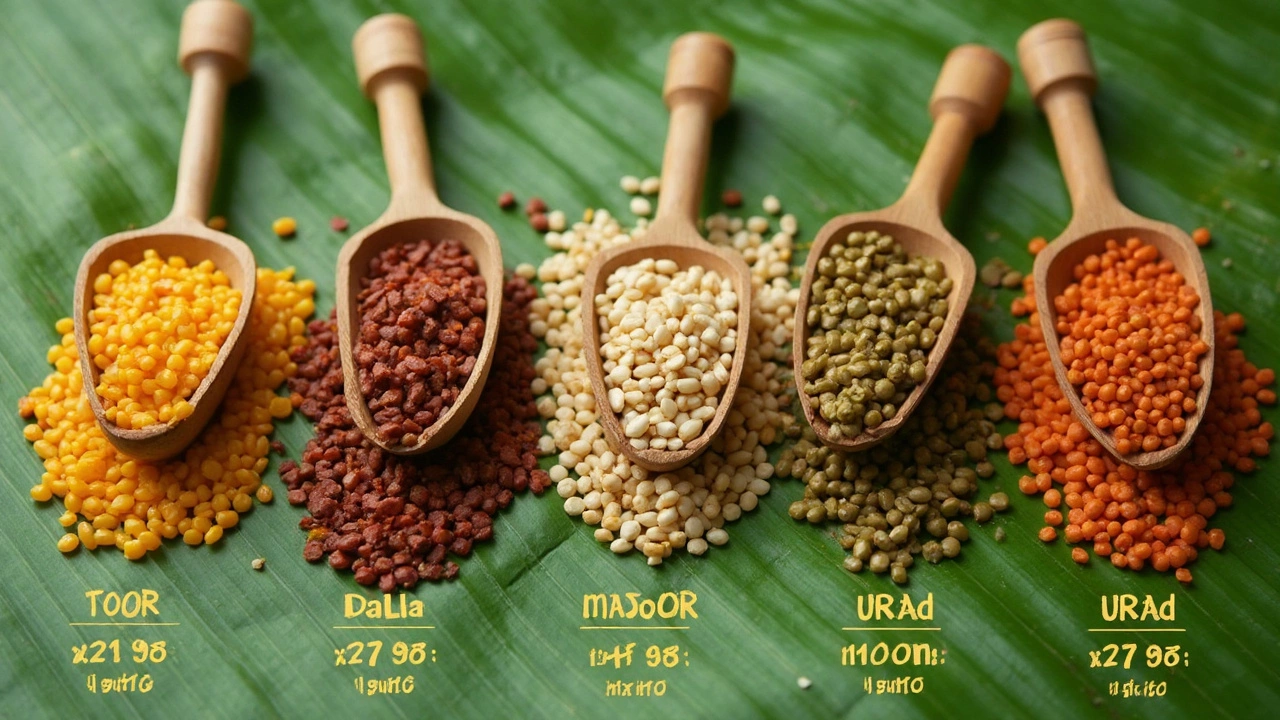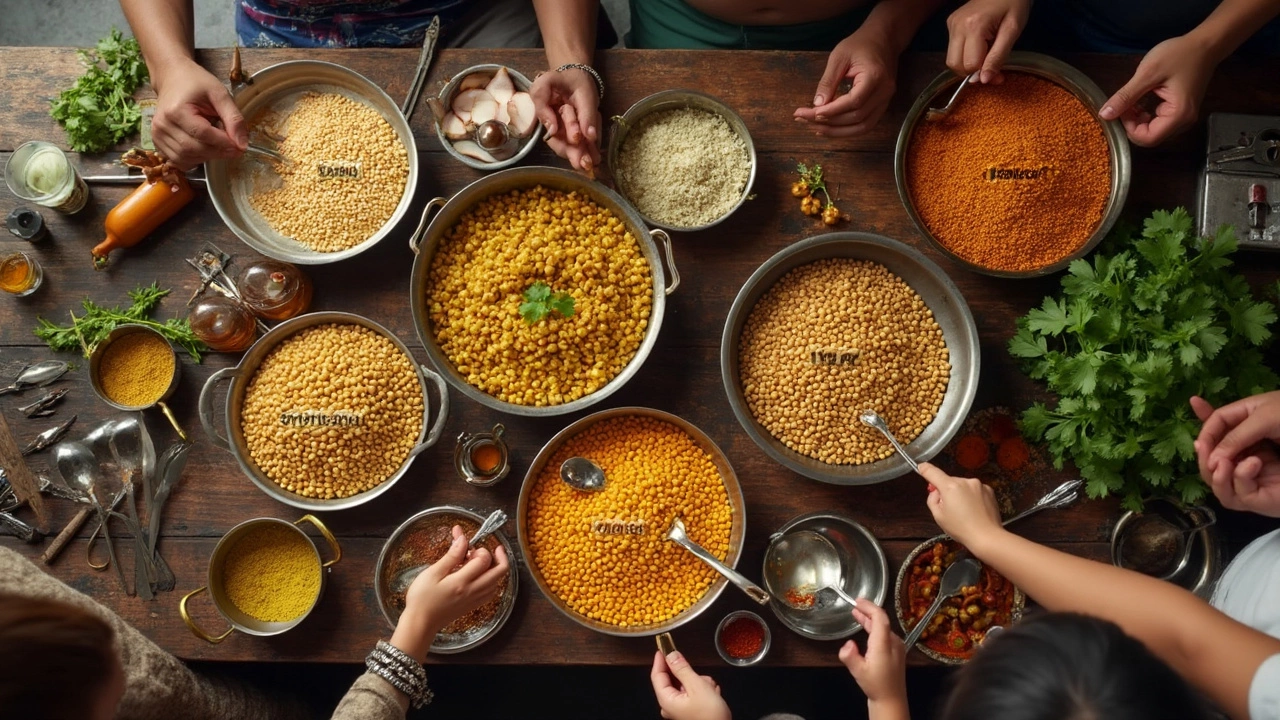If you're trying to add more protein to your meals without breaking the bank, dal is hands-down the easiest place to start. But with so many types—moong, urad, masoor, chana, toor—it gets confusing. Which dal actually packs the most protein, and does it really make a difference to your meal?
Turns out, not all dals are built the same. Some will supercharge your daily protein intake way more than others. You might be surprised which ones actually top the chart (nope, it's not your usual yellow moong dal!). If you're vegetarian or just looking to eat healthier, choosing the right dal gives you way more value for every scoop.
Stick around and you'll not only find the highest-protein dal, but you'll pick up a few tricks to pump up your regular dal recipes, make them more filling, and keep your kitchen routine simple. Because no one wants a complicated recipe on a Sunday evening.
- Why Protein Matters in Dal
- Dal Protein Comparison: Top Choices Ranked
- Easy Ways to Add More Protein to Your Dal
- Simple High-Protein Dal Recipe Ideas
Why Protein Matters in Dal
Protein isn’t just for gym junkies. It’s what keeps you full, helps your muscles recover, and even keeps your hair and nails looking healthy. In India and many veggie-loving kitchens, dal is a go-to source because it’s super affordable and easy to cook. But why fuss about protein when picking dal? Here’s why it matters.
First, protein is essential for building and maintaining everything from muscles to hormones. For people who don’t eat much meat or eggs, getting enough protein can be a challenge. Dals swoop in to save the day, acting as the main protein source in vegetarian diets.
Second, if you’re worried about feeling hungry soon after a meal, protein is your best friend. It keeps you full much longer than carb-heavy foods like white rice or potatoes. So, a high-protein dal makes your meal satisfying and reduces those annoying snack cravings later on.
Here’s another interesting fact: your body uses protein to strengthen your immune system. That’s right—you’re actually helping your body fight off colds and infections every time you grab an extra serving of dal.
- High protein dal isn’t just a buzzword—it’s a smart way to get more nutrition using food you already eat.
- Most dals have both protein and fiber, which helps digestion and keeps your energy steady, so you don’t crash mid-afternoon.
- Swapping out low-protein staples with the right dal gives you more bang for your buck, especially if you want to build a balanced diet or lose weight.
So next time you’re deciding which dal to cook, remember: picking the right one means you’re not just filling up your plate, you’re making your whole meal work harder for you.
Dal Protein Comparison: Top Choices Ranked
If you're sizing up dals for their protein punch, it's good to check some hard numbers. Here's what 100 grams of raw dal looks like for the heavy hitters:
- Urad dal (black gram): 24g protein
- Moong dal (split green gram): 24g protein
- Chana dal (Bengal gram): 21g protein
- Masoor dal (red lentils): 24g protein
- Toor dal (pigeon pea): 22g protein
Surprised by the close race? Moong dal, urad dal, and masoor dal are basically tied up, each offering about 24 grams per 100 grams. Chana dal and toor dal are just a tad behind. For context, a boiled egg has only about 13 grams for the same serving size—and that isn’t even vegetarian! So if you're eyeing high-protein dal recipes, these three are your best bets.
Chana dal is a bit lower than urad and moong, but it's still a solid option, especially if you like a firmer, nuttier texture. Moong dal cooks quickly and is easy on the stomach, which is great if you want something light. Urad dal makes those creamy, satisfying dals like dal makhani, especially when slow-cooked. Masoor cooks fast and has a slightly earthy taste, fitting right into quick weekday dinners.
If you want to go even higher with protein, you can actually blend these dals together or add some sprouted moong—fresh sprouts boost that protein content because of how they change during sprouting. But all said, if you’re looking for a clear winner, urad dal, moong dal, and masoor dal are neck and neck for the top spot. Choose based on your taste, digestion, or the recipe you crave tonight.

Easy Ways to Add More Protein to Your Dal
Bumping up protein in your dal is actually super easy, and you don’t have to get fancy or spend extra. You can make a regular bowl of dal a real muscle-builder with just a few tweaks.
First, let’s talk about dal combos. Pairing two types of dal isn’t just for taste—it packs a protein punch. For example, mixing chana dal (about 20g protein per 100g dry) with urad dal (around 24g per 100g dry) lifts up the total hit of protein, plus gives a nice texture. If you’re used to only using moong dal, adding a half scoop of chana or urad boosts the amount without you even noticing.
- high protein dal tip: Use more chana or urad dal if you want the biggest boost.
- Add cooked beans like rajma or black-eyed peas straight into the dal—this adds plant protein without changing the base flavor too much.
- Throw in a handful of chopped spinach or kale at the end of cooking. Surprising, but leafy greens bring in extra protein per calorie and a bunch more nutrients, too.
- Top your bowl with roasted seeds (like pumpkin or sunflower) or crushed peanuts for another layer of protein and crunch.
Want to see how the protein stacks up when you mix and match? Here’s a simple stat comparison. This table shows average protein content per 100 grams dry weight before cooking (remember, cooked dal will have less protein per 100g because of the water):
| Dal Type | Protein per 100g (dry) |
|---|---|
| Urad Dal | 24g |
| Chana Dal | 20g |
| Masoor Dal | 18g |
| Moong Dal | 24g |
| Toor Dal | 22g |
Another pro move: Incorporate a spoon of plain Greek yogurt or dahi on the side. One cup has 8-10g of protein—a quick way to top up without fuss.
No need to overhaul your whole recipe. Just a few swaps or add-ons will make your dal way more filling and keep you satisfied longer. Basically, your regular dal can be your main protein star with your usual pantry ingredients.
Simple High-Protein Dal Recipe Ideas
If you want more protein without adding fuss, start with the right dal. High protein dal usually means using urad dal, chana dal, or even a combo. Most basic dals clock in with 7-9 grams of protein per 100g cooked, but check out this quick look at the front-runners:
| Dal Type | Protein (per 100g cooked) |
|---|---|
| Urad Dal (Black Gram) | 9g |
| Chana Dal (Split Bengal Gram) | 8.8g |
| Moong Dal (Green Gram) | 7g |
| Toor Dal (Pigeon Pea) | 7.2g |
| Masoor Dal (Red Lentil) | 7.6g |
Here are easy recipes you can pull off on a busy day, all with a protein punch.
- One-pot Urad Chana Dal Tadka: Use half urad dal and half chana dal for max protein. Rinse, boil with salt and turmeric, and in a small pan do a basic tadka (cumin, garlic, green chili, tomatoes). Mix, simmer, serve with rice or roti.
- Moong & Spinach Quick Dal: Moong dal is easier to digest and cooks fastest. Boil it with a handful of chopped spinach for an iron and protein boost. Finish with a tadka of hing, garlic, and mustard seeds.
- Chana Dal Vegetable Soup: Pressure cook chana dal with carrot, beans, and tomato. Blend half for a creamy texture and finish with coriander, lemon, and black pepper—super filling and surprisingly hearty.
- Multi-dal Khichdi: Mix urad, chana, masoor, and moong dal with brown or red rice. Toss in any veggies you like. Pressure cook till soft. This is perfect for batch-cooking and gets you a combo of amino acids and fiber.
Want to squeeze out even more protein? Add a tadka using ghee or coconut oil, top with roasted peanuts or hemp seeds, and always add some lemon at the end for better iron absorption. Toasting the dal before boiling brings out a nuttier flavor and helps it not get mushy. Standard rule: Use about 1/3 cup dal per person and you’ll meet nearly a quarter of your daily protein needs in just one bowl.
